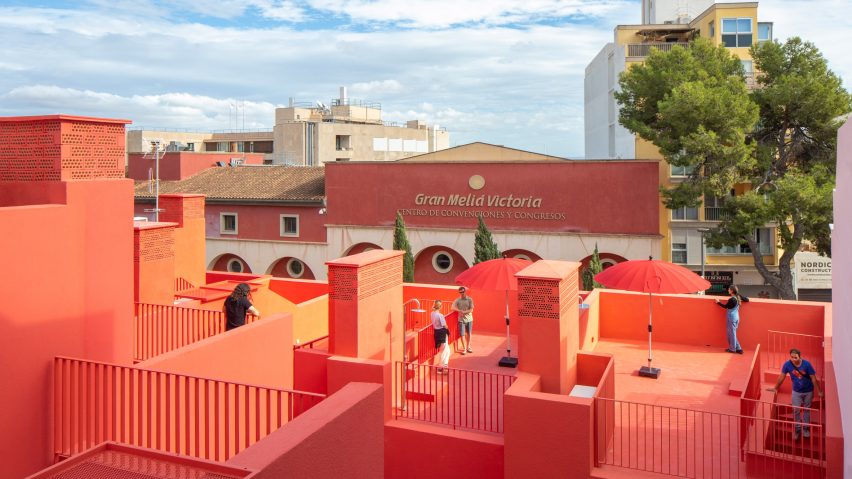
MVRDV and GRAS Reynés reference Camper shoes for Project Gomila buildings
A colourful collection of buildings in Palma de Mallorca have been designed by architecture studios MVRDV and GRAS Reynés Arquitectos to echo the playful style of Camper shoes.
The architecture studios were commissioned by the Fluxà family, owners of the Mallorca-based brand Camper, to add seven mixed-use buildings around a plaza in the southwest of the Balearic Island city.
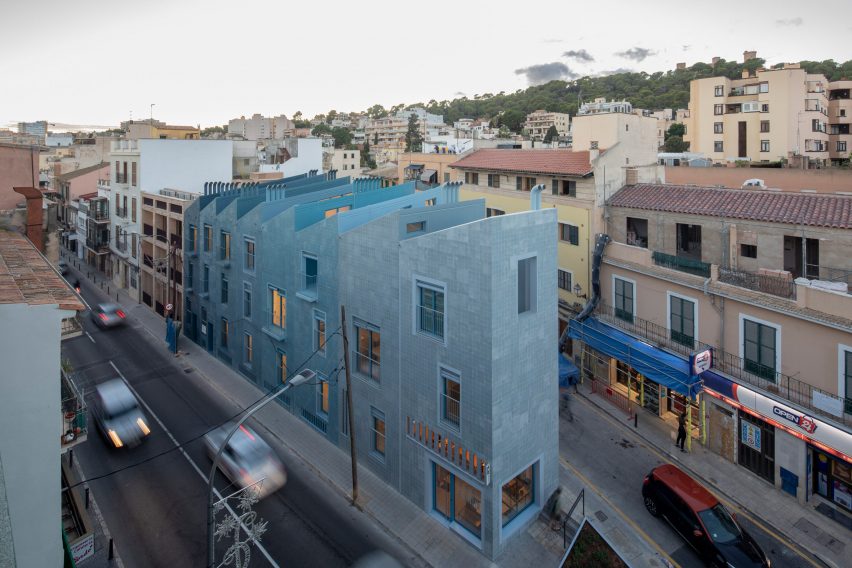
Called Project Gomila, the 15,000-square-metre scheme incorporates 60 homes, offices and social spaces designed through collaboration between Dutch firm MVRDV and Spanish studio GRAS Reynés.
The ambition is to rejuvenate the El Terreno neighbourhood, but also to create a recognisable identity that reflects the Camper ethos of "combining heritage with innovation and creativity".
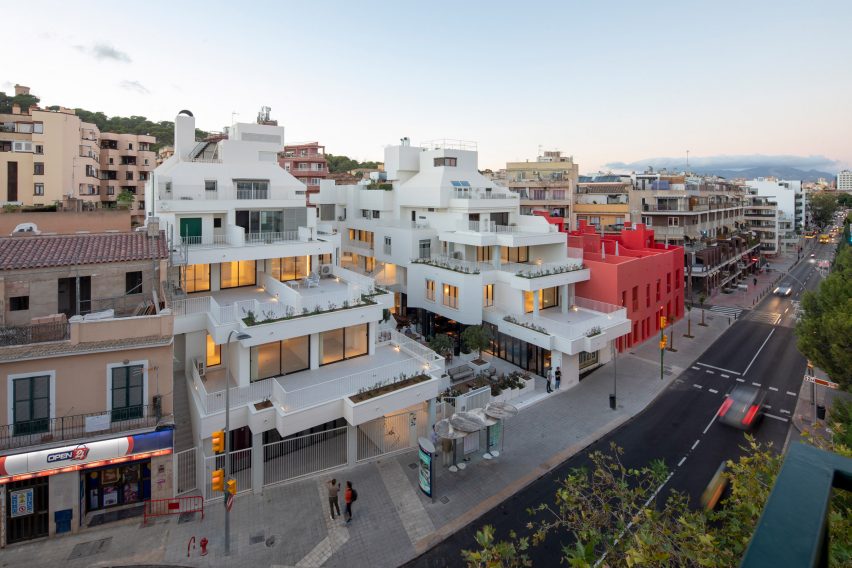
Five of the seven buildings are now complete, featuring distinctive details including staggered terraces, colour-blocked facades and bricks made from compressed earth.
"Project Gomila is an exciting architectural project – each of the seven buildings can stand alone as its own individual design, and yet at the same time they are also carefully considered as an ensemble that gives Gomila a fresh boost," said MVRDV co-founder Jacob van Rijs.
"When looked at together, you see a colourful collection of buildings that still somehow work together as a group," he said.

Centred around Plaza Gomila, the buildings include a renovated 1970s building that has been rebranded as the Gomila Center.
Containing a restaurant, office units and apartments, this bright white building is characterised by its complex form. Its ground-floor spaces are organised around a generous courtyard, while the upper levels open out to various balcony terraces.
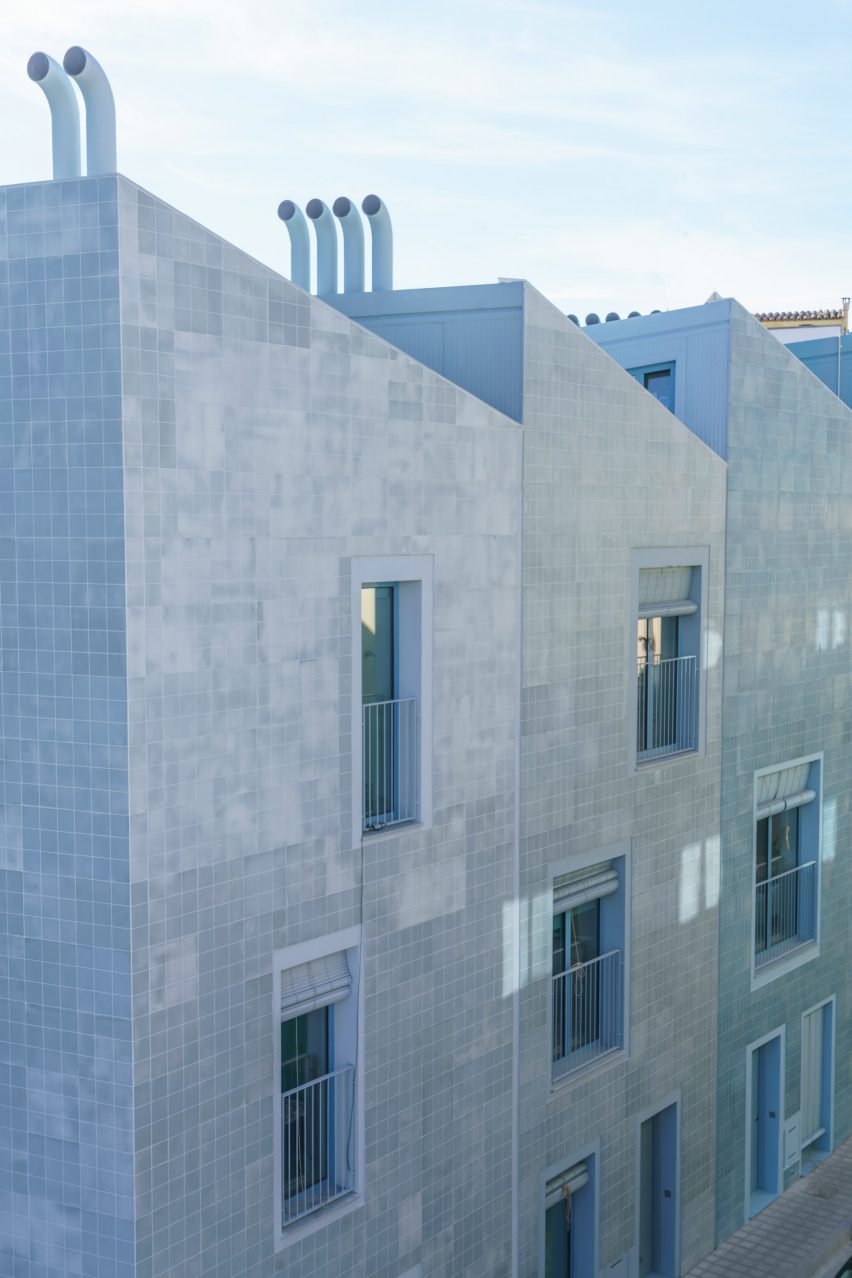
Next door, Las Casitas is a triangular block of eight townhouses coloured in the same red as the Camper logo.
Matching red details feature inside each home. Residents also have their own roof terraces, making it easy for them to socialise with their neighbours.
Another residential block, called Las Fabri-Casas, features a contrasting facade of blue ceramic tiles.
Located on a corner, it has a sawtooth roof that neatly divides the block into eight sections.
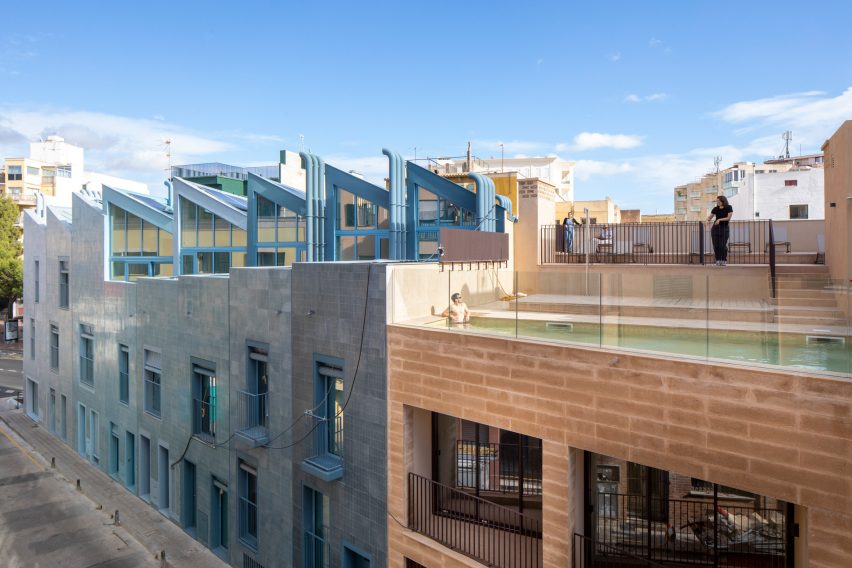
Las Fabri-Casas adjoins a building made from compressed earth bricks – an apartment block with a rooftop swimming pool that offers residents views towards the nearby Bellver Castle.
Nearby is the green-toned La Plaza, a renovated building that now contains offices, a public roof terrace and a reimagined version of the neighbourhood's historic Bellver bar.
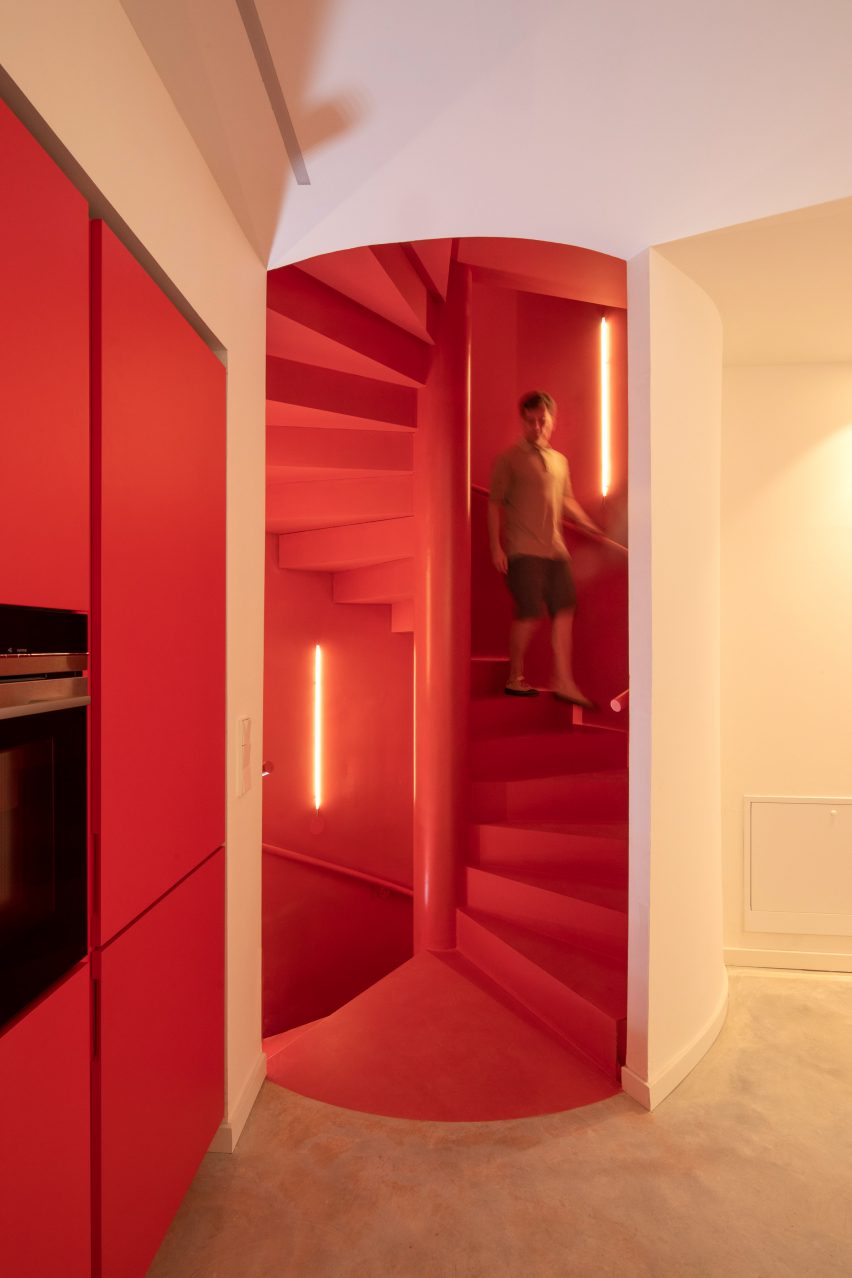
"In terms of urbanism, the concept revolves around the diversity of the buildings," said MVRDV co-founder Winy Maas.
"Where some of the designs are more suited to family homes, others are more suited for apartments for singles or couples; where some buildings are fully residential, others bring commercial functions into the mix," he continued.
"This diversity of people and spaces will help bring back El Terreno's lost vibrancy."
El Terreno was a hotspot for nightlife in the 1960s and 70s when it hosted performances by the likes of musicians Jimi Hendrix, Ray Charles and Tom Jones.
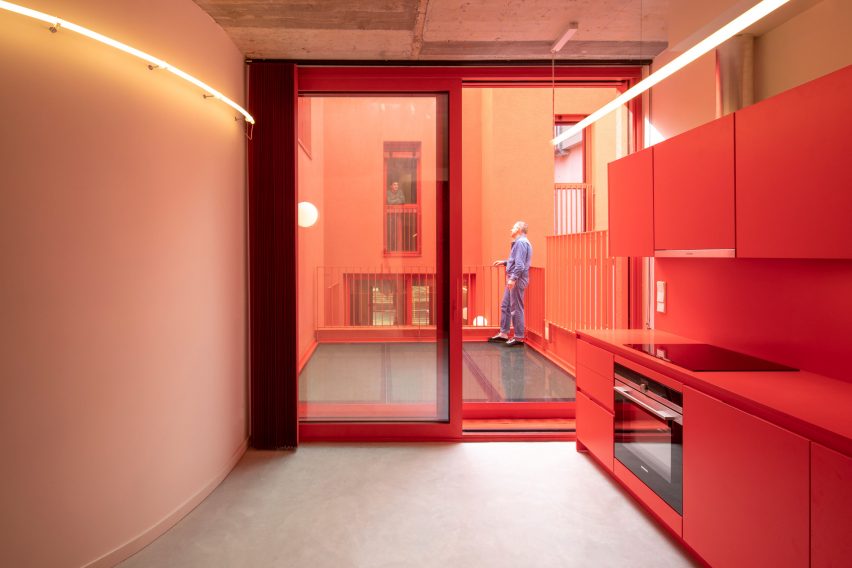
Two existing buildings are also due to be transformed as part of Project Gomila.
One will become the bright yellow Casa Virginia, while the other will become a luxury villa.
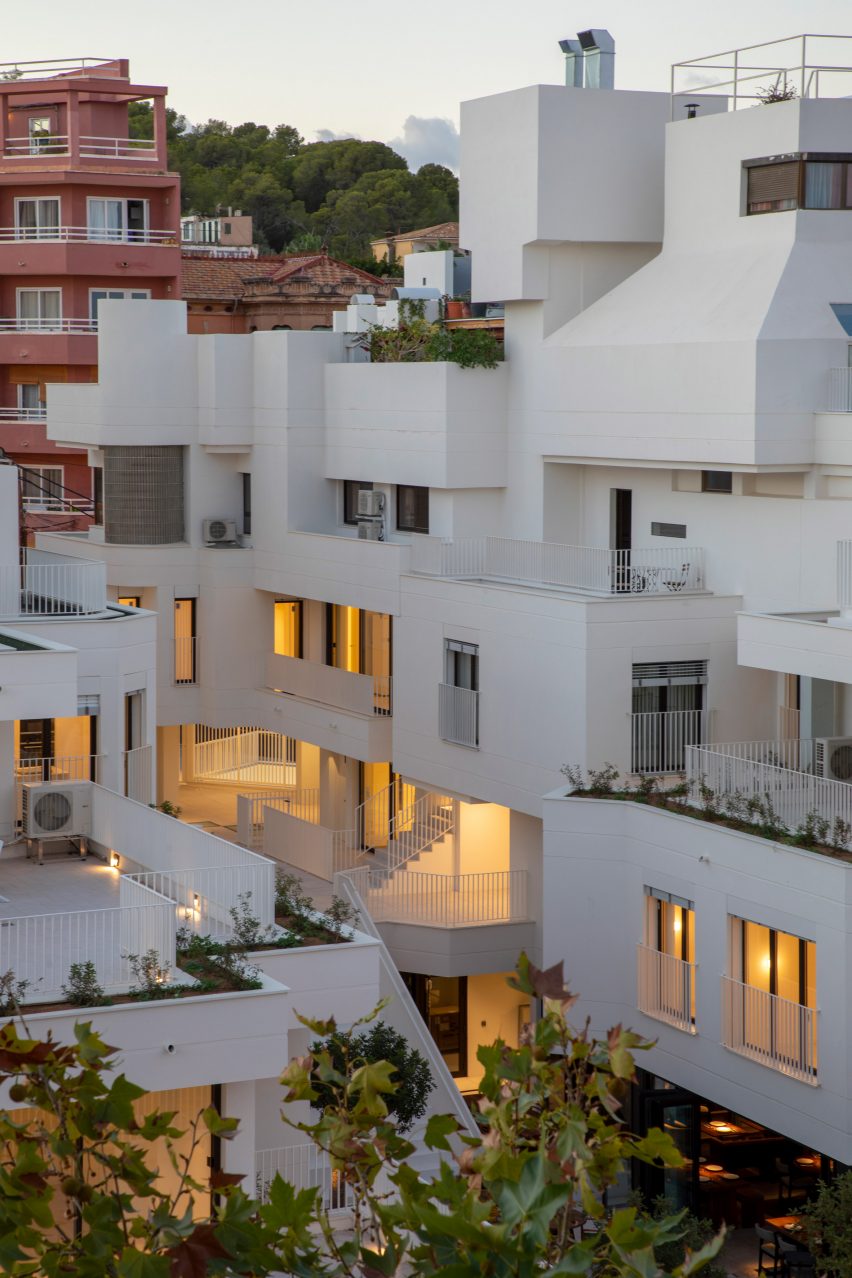
"The Gomila Project activates a new centrality in Palma, a new meeting and reference point not just for the people in the neighbourhood, but for all the citizens," said GRAS Reynés founder Guillermo Reynés.
"The project has been very well received, bringing back good memories that Palmesanos had of the area."
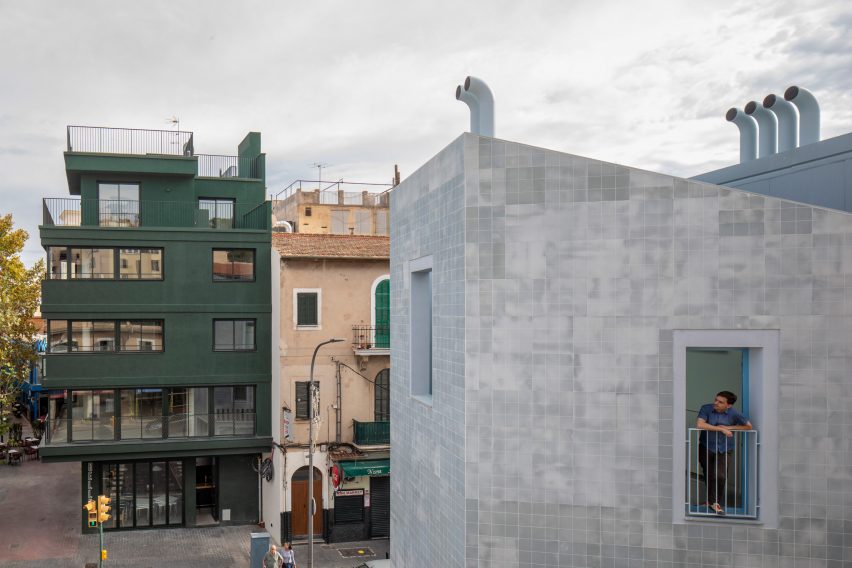
All seven buildings are designed to Passivhaus principles, with low energy use, thermal efficiency and climate control.
Their rooftops are covered in solar panels to generate clean energy, while heat recovery systems and cross ventilation help to reduce their energy demand.
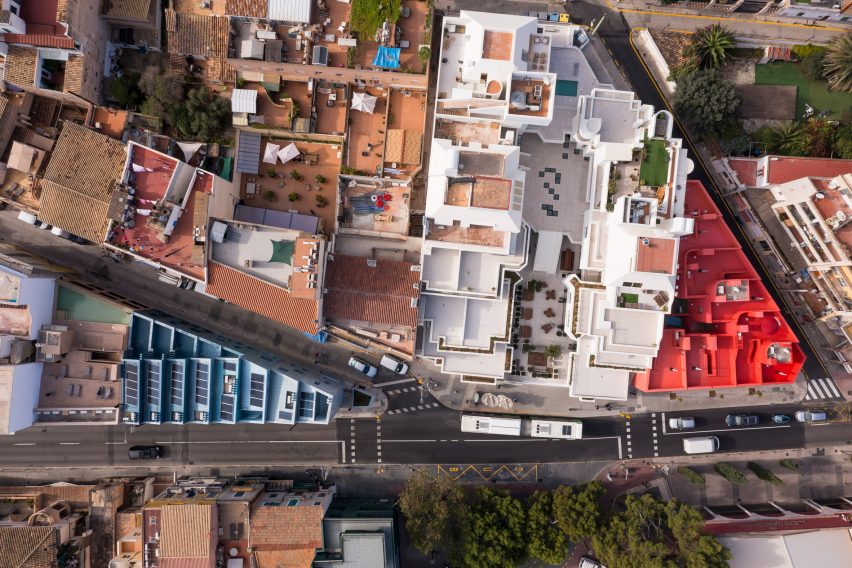
Project Gomila is not the first collaboration between MVRDV and GRAS Reynés – the two firms previously teamed up to design a carbon-neutral city in La Rioja, Spain.
MVRDV has also just announced plans for a 140,000-square-metre library in Wuhan, China.
The photography is by Daria Scagliola.
Project credits
Client: Doakid & Forch Med
Architect: MVRDV, GRAS Reynés Arquitectos
MVRDV team: Winy Maas, Jacob van Rijs, Nathalie de Vries, Fokke Moerel, Jose Ignacio Velasco Martin, Jonathan Schuster, Samuel Delgado, Mathias Pudelko, Marek Nosek, Jonas Andresen, Alicja Pawlak, Simone Costa, Ranmalie Mataraarachchi, Carl Jarneving
GRAS Reynés team: Guillermo Reynes, Mayca Sánchez Carvajal, Alejandro Domingo Leal, Mikolaj Zajda Giacomo Sorino, Mariano Esposito
Contractors: Ferratur, Bibiloni, Tarraco
Structural engineering, MEP and cost calculation: EA Engineers Assessors
Graphic design: Mario Eskenazi, Arauna Studio